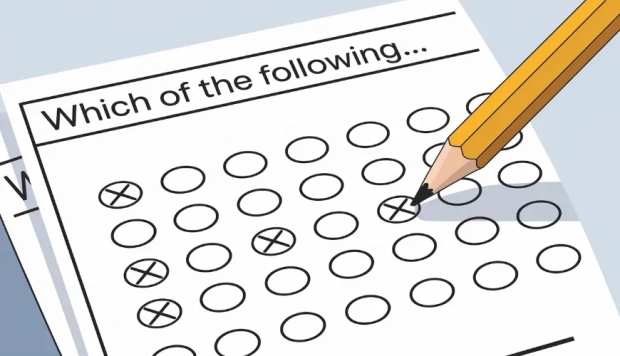Understanding How Many Hours Are in a Year and Why It Matters

Every minute of our day is shaped by time, whether we're scheduling meetings, planning vacations, or budgeting work hours. But how many hours are in a year? And how does that translate into the hours we typically spend working? Whether you're an employee, employer, freelancer, or simply curious, understanding how many hours are in a year-and how many of those are devoted to work-can be surprisingly valuable.
How Many Hours Are in a Year?
Let’s start with the basics. A standard year has 365 days. Multiply that by 24 hours, and you get:
365 days × 24 hours = 8,760 hours in a year
This number rises slightly during a leap year-which comes every four years-adding one extra day:
366 days × 24 hours = 8,784 hours in a leap year
So, depending on the calendar year, there are either 8,760 or 8,784 hours.
But this total includes every hour of every day, whether you’re sleeping, working, or binging your favorite TV show. To understand how many of those hours are spent working, we need to break things down further.
How Many Hours Are in a Week?
Since most work schedules are based on weekly hours, it's helpful to look at how many hours are in a standard week.
There are always 168 hours in a week:
7 days × 24 hours = 168 hours
Of course, most of us don’t spend all 168 hours working (thankfully). The average full-time employee typically works 40 hours per week, a number that has been considered standard since the Fair Labor Standards Act in the U.S. was passed back in 1938.
But how do those weekly hours add up over an entire year?
How Many Work Hours Are in a Year?
To calculate how many working hours are in a year, we need to consider several factors:
- Number of work weeks
- Holidays
- Paid time off (PTO)
- Sick days
Let’s assume a standard full-time schedule of 40 hours per week, working 5 days a week. There are 52 weeks in a year, so:
40 hours/week × 52 weeks = 2,080 work hours in a year
So, under ideal conditions-meaning no holidays, no vacation, and no sick days-there are 2,080 working hours in a year.
But that’s not the full picture for most people. Here’s a more realistic breakdown.
Factoring in Holidays and Paid Time Off
Let’s say an employee receives the following:
- 10 paid holidays
- 10 vacation days
- 5 sick days
That’s 25 days off in total. Since a typical workday is 8 hours:
25 days × 8 hours = 200 hours off
Subtracting that from the original 2,080 hours:
2,080 – 200 = 1,880 effective working hours per year
In this more common scenario, an employee might work around 1,880 hours per year. Of course, this varies by country, company policy, and even job type. For example, countries in the European Union typically mandate more vacation time than the United States, which would reduce the annual working hours.
Why Knowing Your Work Hours Matters
Understanding how many work hours are in a year isn’t just helpful trivia-it’s an essential part of various life and business calculations. Here are a few important reasons why:
1. Financial Planning: If you're paid hourly, knowing your total annual hours helps you estimate your yearly income. If you’re salaried, it helps you figure out your effective hourly rate, which can be useful when negotiating raises or comparing job offers.
2. Project Management: For freelancers, agencies, or consultants, estimating workload in terms of hours per year can help with scheduling, pricing, and resource management.
3. Employer Budgeting: Companies often plan resources, payroll, and staffing based on total work hours. If a business needs 4,000 hours of labor per year to hit production targets, that could mean hiring two full-time employees.
4. Work-Life Balance: Tracking how many hours you work over a year can help identify overwork or burnout. If you're working 60-hour weeks consistently, that’s 3,120 hours per year-significantly above the standard.
Real-World Example: A Freelancer’s Annual Hours
Take the case of Maria, a freelance graphic designer. She charges $60 per hour and wants to set a goal for the year. She hopes to earn $90,000 before taxes.
To figure out how many hours she needs to work:
$90,000 ÷ $60/hour = 1,500 hours
That’s fewer than the standard 2,080 work hours per year. However, as a freelancer, Maria doesn’t get paid time off or benefits. She also spends time doing unpaid tasks like marketing and client communication. So, while she only needs to bill 1,500 hours, she likely needs to work more-perhaps 2,000 total hours-to meet her income goal.
This example shows how understanding your available and billable hours in a year directly impacts your business and lifestyle planning.
Comparing Countries: How Many Work Hours Are in a Year Globally?
The number of working hours per year differs widely across the globe. According to data from the Organisation for Economic Co-operation and Development (OECD):
- United States: Around 1,767 hours per year
- Germany: Around 1,349 hours per year
- Mexico: Around 2,128 hours per year
- South Korea: Around 1,915 hours per year
These numbers include part-time and full-time workers, which slightly skews the data. Still, it paints a clear picture: not all cultures approach work hours the same way. Some prioritize productivity and efficiency over long hours, while others emphasize hard work and face time.
Beyond the Numbers: The Quality of Those Hours
Simply knowing how many hours are in a work year is not enough. What truly matters is how those hours are used. Are they productive? Are they sustainable? Are workers supported with mental health resources and fair compensation?
“Time is the most valuable thing a man can spend,” the philosopher Theophrastus once said. In today’s fast-paced world, this quote remains just as relevant. Understanding your total work hours can help you make conscious decisions about how to spend your time-whether that means prioritizing rest, asking for a raise, or optimizing your daily routine.
How Many Hours Are in a Leap Year?
For those meticulous with numbers, leap years bring an extra twist. Every four years, February gains an additional day, bringing the total number of days in the year to 366. That means:
366 × 24 = 8,784 hours
This affects annual calculations slightly, especially if you're billing by the hour or scheduling tightly. It’s a minor difference-just 24 extra hours-but over large workforces or across a long-term contract, even small variations add up.
Wrapping Time Around Your Life
So, how many hours are in a year? The clear answer is 8,760 (or 8,784 during leap years). And how many working hours are in a year? That’s typically around 2,080 hours, before holidays, vacations, and other time off are considered.
But perhaps the more meaningful answer is what you decide to do with those hours. Whether you're grinding through spreadsheets, leading a team, chasing artistic dreams, or caring for a family-understanding your time empowers you to take control of your year.
After all, time is the one resource we all share-and once it ticks by, we can’t get it back.



